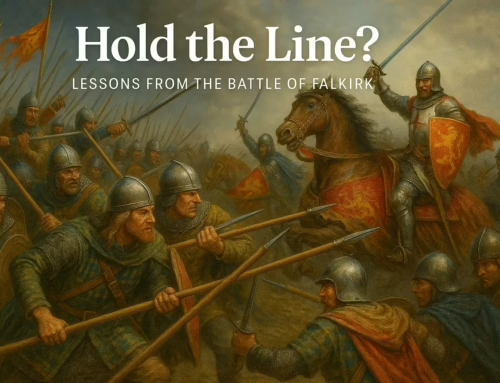Two hundred nineteen years ago today, off Cape Trafalgar, the Royal Navy under Admiral Horatio Nelson faced the combined fleets of France and Spain — and changed the course of European history. The Battle of Trafalgar wasn’t just a victory of ships and guns. It was a triumph of training, communication, and trust.
Nelson’s fleet was outnumbered — 27 British ships against 33 Allied. Yet every British crew knew exactly what to do, not because they waited for orders, but because Nelson had spent months drilling them in manoeuvre, gunnery, and initiative. His captains understood intent, not just instructions. When the moment came, they acted as one.
That is the enduring lesson of Trafalgar: in complex, fast-moving situations, victory belongs to the side that trains hardest before the first shot is fired.
Today’s military and law enforcement teams face their own “Trafalgar moments” — not on the open sea, but in urban environments, at checkpoints, and during high-pressure incidents where decision-making, coordination, and communication determine outcomes. Modern simulation technology now gives us the means to achieve the same standard of readiness Nelson demanded from his fleet — through immersive, data-rich, repeatable training that builds judgement as well as skill.
At Agincourt, that philosophy underpins everything we design — from BattleVR, which delivers full-scale synthetic CQB (Close Quarter Battle) environments with data-driven after-action review, to Archer, where officers refine accuracy and judgement under stress. Like Nelson’s captains, today’s operators must learn to act decisively within intent, not wait for instruction.
Trafalgar was won long before the first cannon fired — in the drills, preparation, and unity of purpose that defined the Royal Navy.
In the same way, the next generation of defence and security professionals will win their battles in the synthetic training rooms, virtual ranges, and command simulations that prepare them for reality.
“No captain can do very wrong if he places his ship alongside that of the enemy.” — Admiral Nelson
The Painting
The accompanying artwork, The Battle of Trafalgar (1836) by William Clarkson Stanfield, captures the chaos and discipline of Nelson’s fleet at the height of combat. A former Royal Navy seaman himself, Stanfield painted with an intimate understanding of wind, light, and command — portraying not just the violence of battle, but the precision of a fleet acting in perfect unity. His work stands as both tribute and training lesson: mastery under pressure comes only from preparation.




